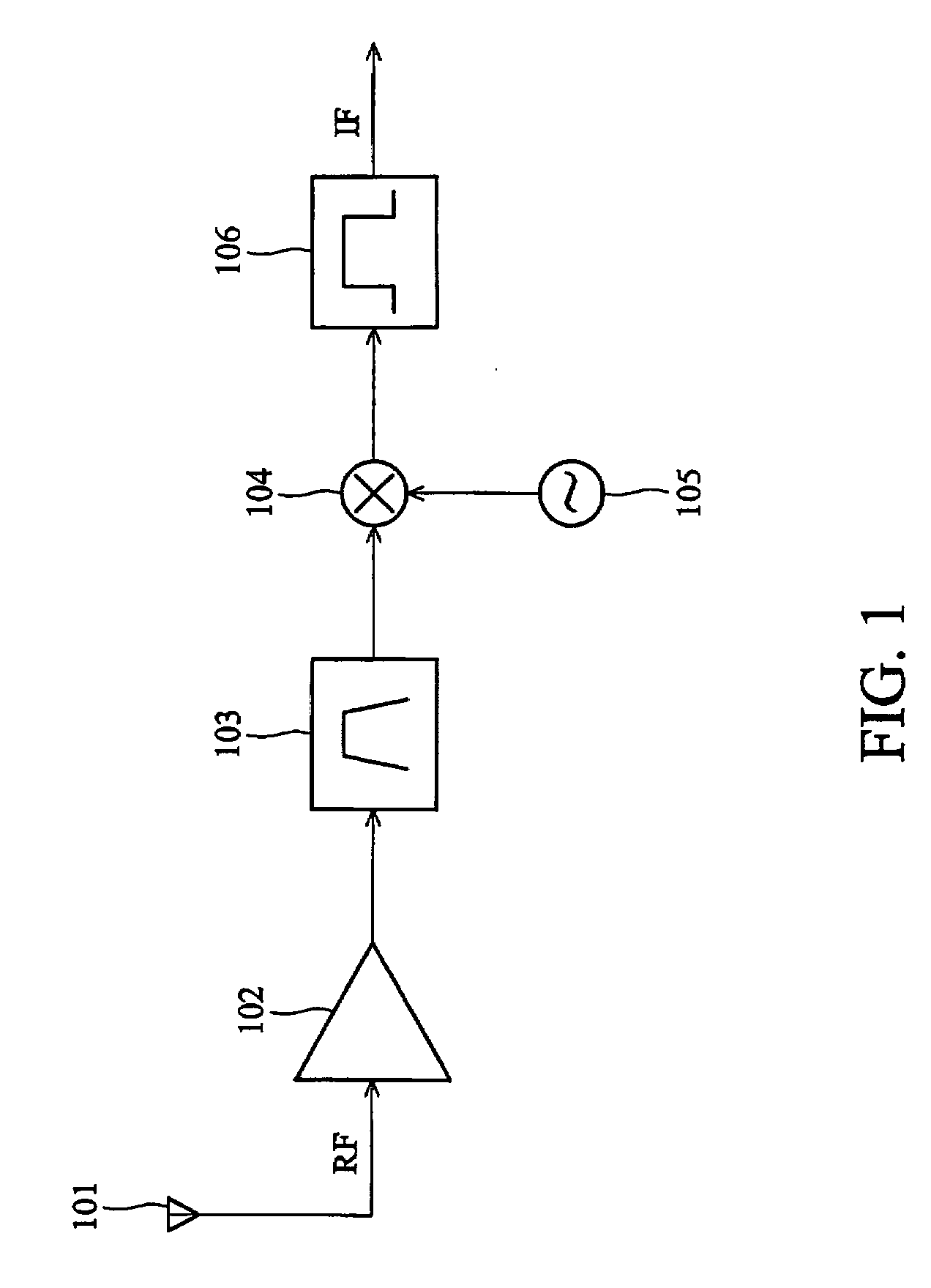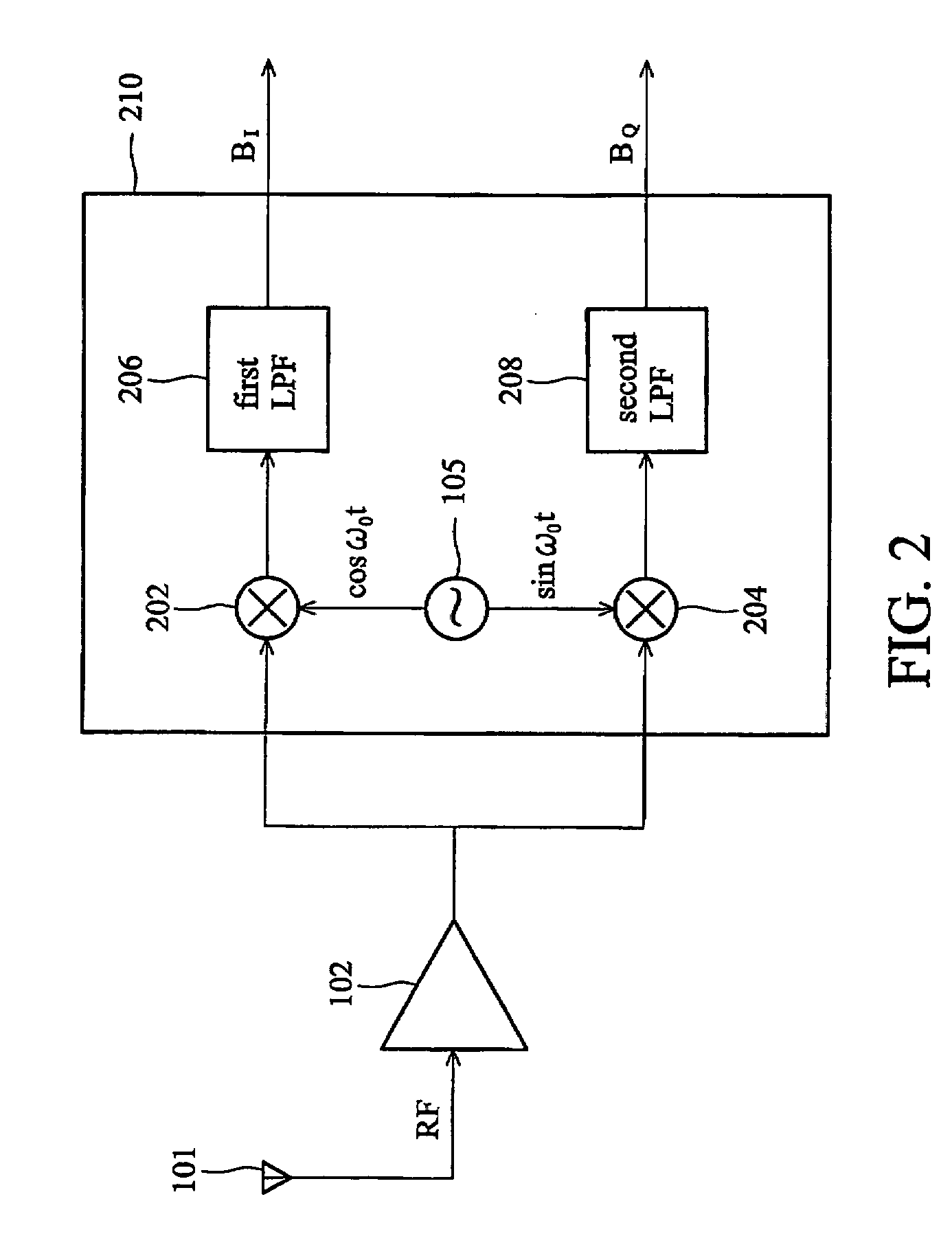Method and apparatus for RF signal demodulation
a signal demodulation and signal technology, applied in the field of rf reception, can solve the problems that the simple zif design cannot be adopted in situations requiring it, and achieve the effect of reducing the number of zifs
- Summary
- Abstract
- Description
- Claims
- Application Information
AI Technical Summary
Benefits of technology
Problems solved by technology
Method used
Image
Examples
Embodiment Construction
[0015]FIGS. 3a and 3b show embodiments of the RF receiver according to the invention. In FIG. 3a, the antenna 101, LNA 102 and direct conversion unit 210 are identical to the ZIF receiver in FIG. 2. In-phase baseband signal BI and quadrature baseband signal BQ are generated from the direct conversion unit 210, and then digitized by the first ADC 302 and second ADC 304 to generate corresponding in-phase digital signal DI and quadrature digital signal DQ. Thereafter, a digital up converter 306 combines the in-phase digital signal DI and quadrature digital signal DQ into the IF signal. The embodiment is based on conventional ZIF architecture, thus possesses good image rejection capability. A detailed description of the digital up converter 306 is disclosed in FIG. 4 and FIG. 5.
[0016] In FIG. 3b, the direct conversion unit 220 differs from the direct conversion unit 210 in FIG. 3a, in that local OSC 105 provides an oscillation frequency different from the RF carrier frequency. For exam...
PUM
 Login to View More
Login to View More Abstract
Description
Claims
Application Information
 Login to View More
Login to View More - R&D
- Intellectual Property
- Life Sciences
- Materials
- Tech Scout
- Unparalleled Data Quality
- Higher Quality Content
- 60% Fewer Hallucinations
Browse by: Latest US Patents, China's latest patents, Technical Efficacy Thesaurus, Application Domain, Technology Topic, Popular Technical Reports.
© 2025 PatSnap. All rights reserved.Legal|Privacy policy|Modern Slavery Act Transparency Statement|Sitemap|About US| Contact US: help@patsnap.com



